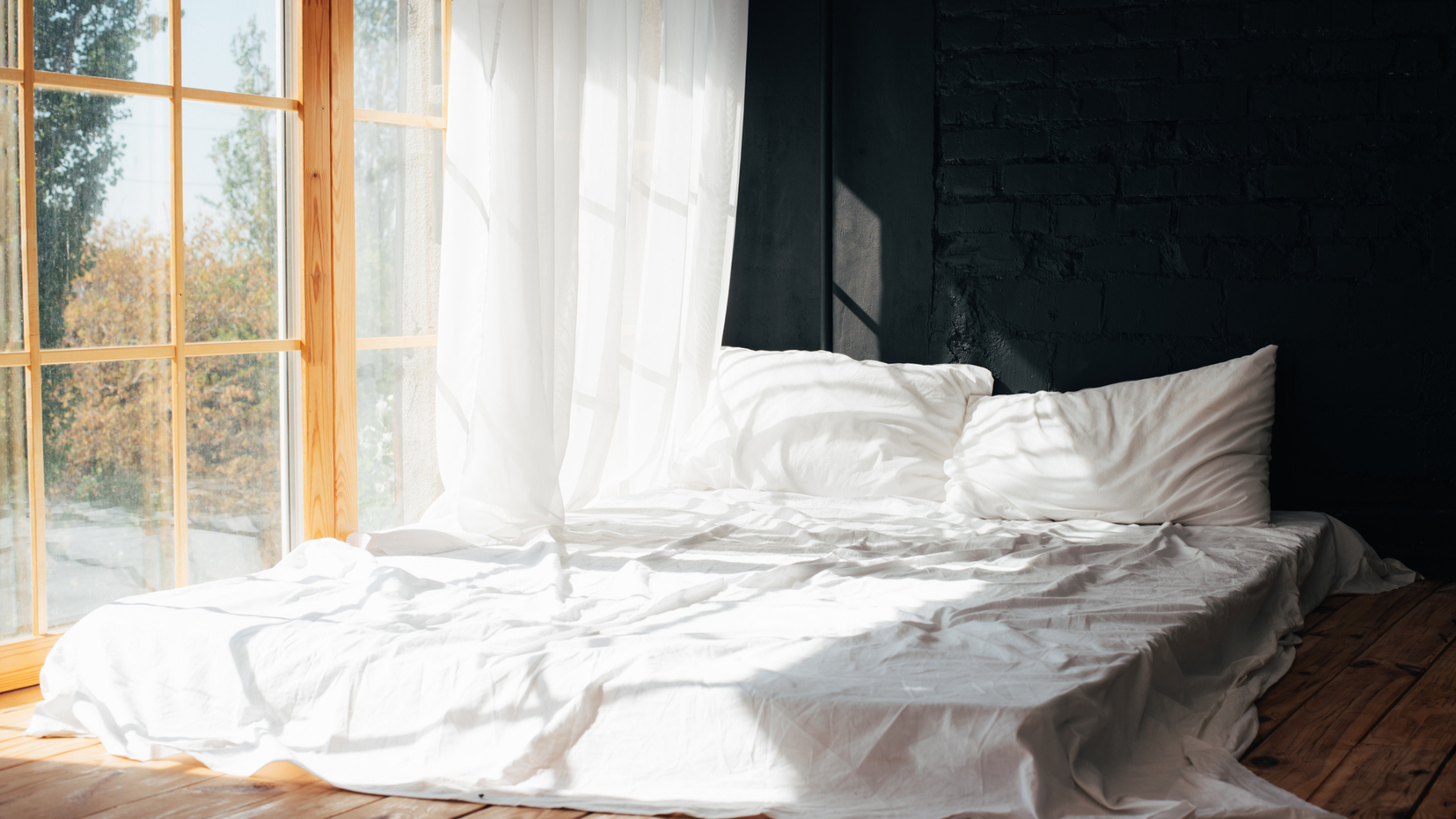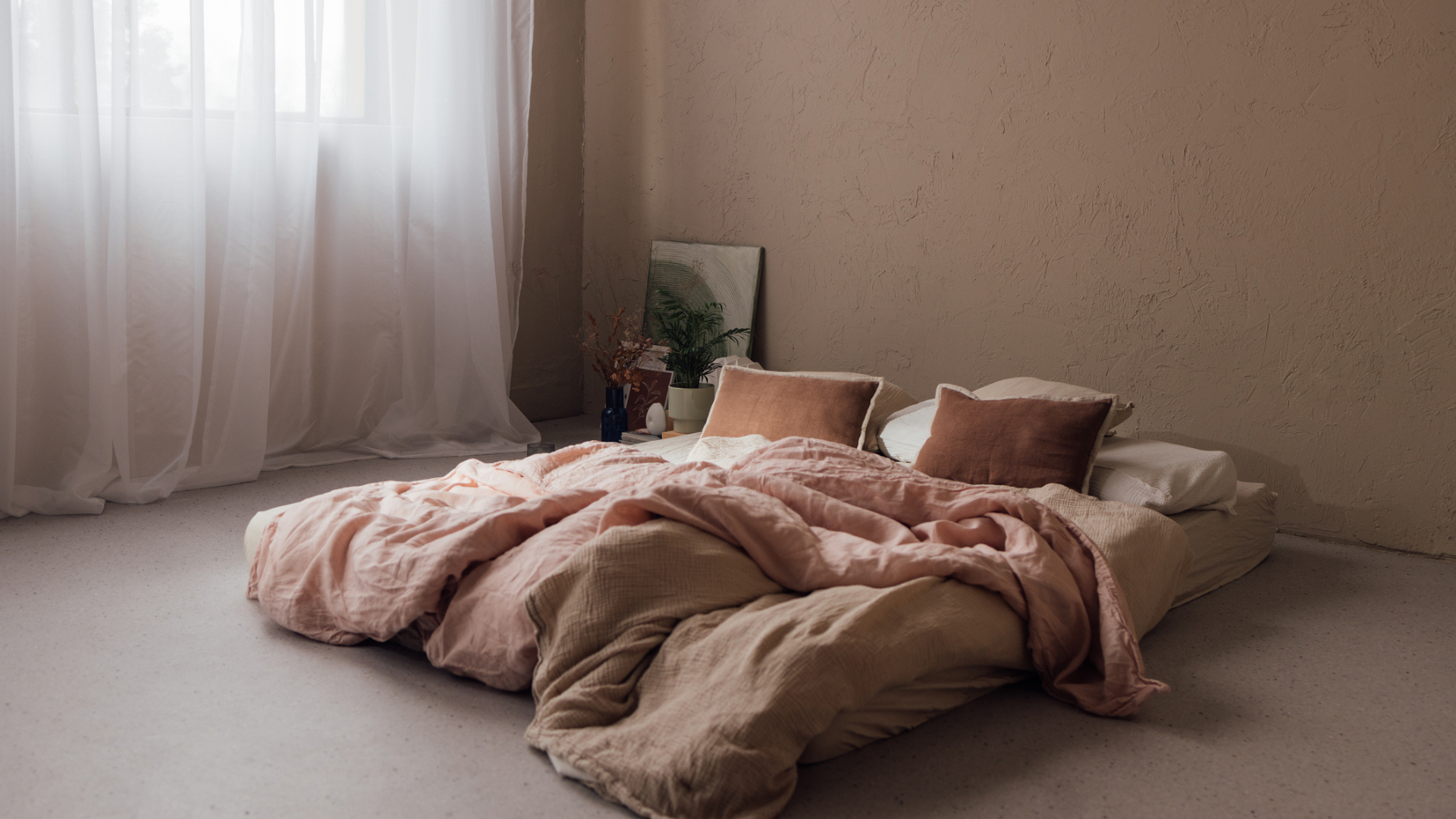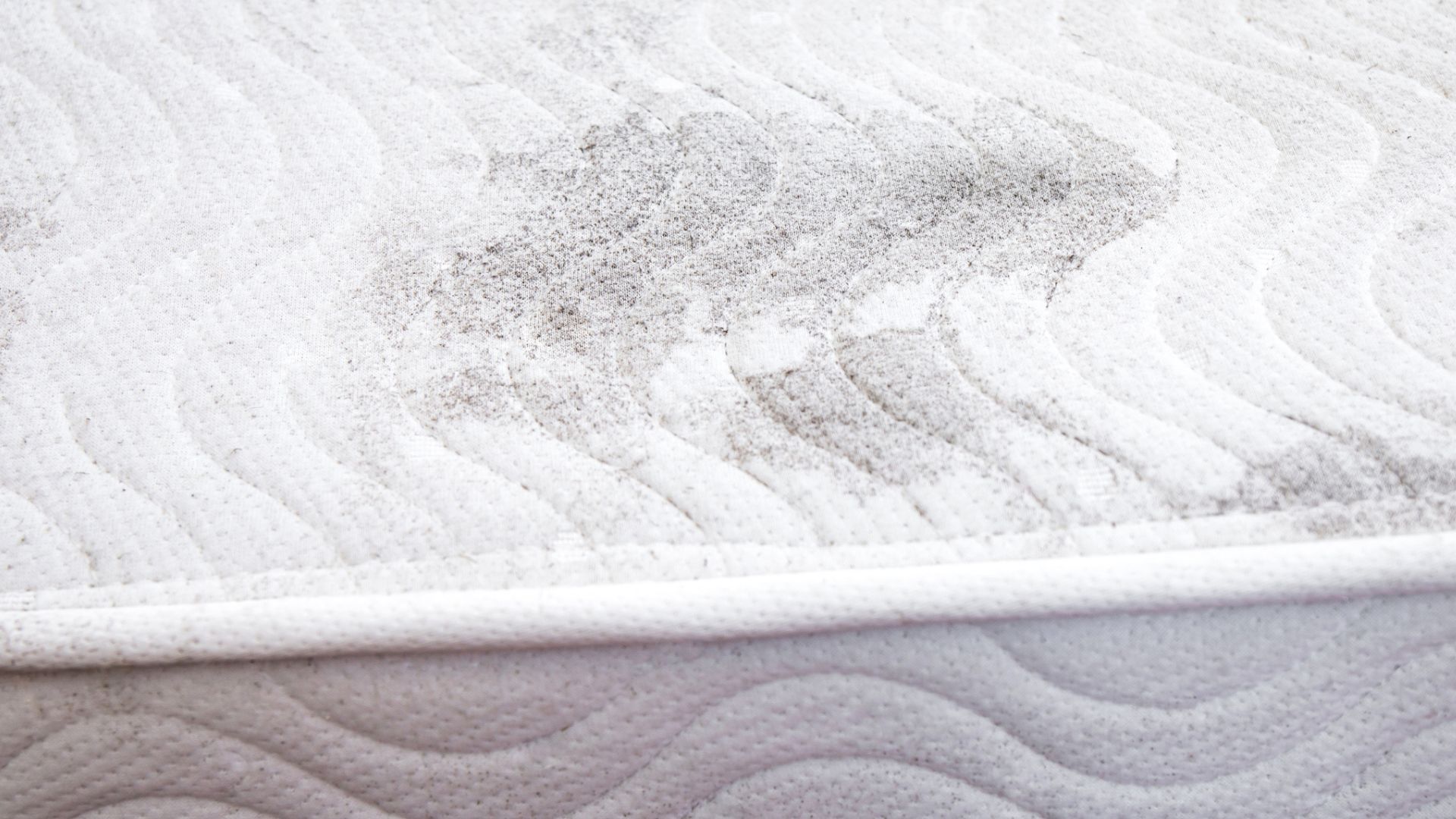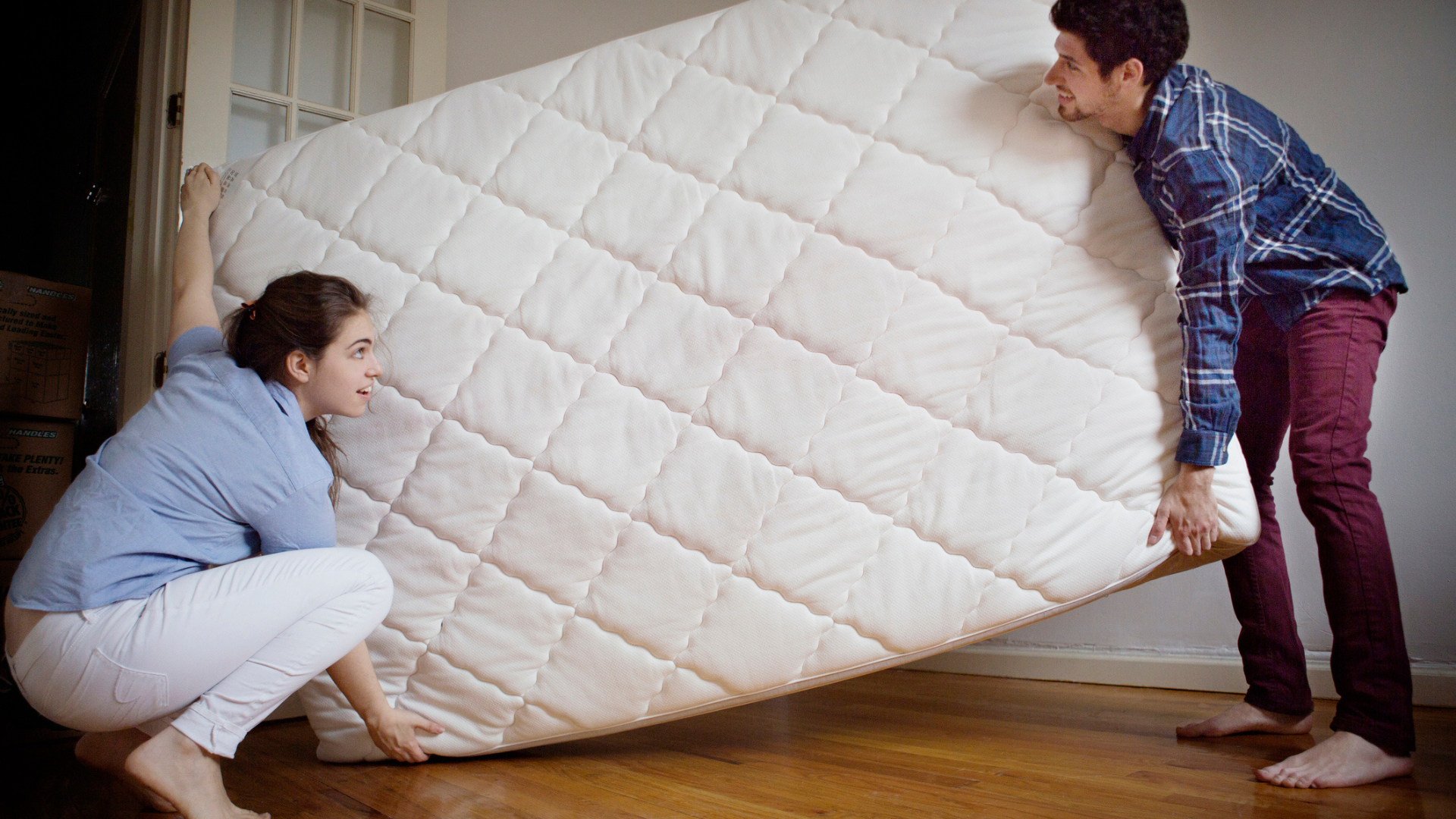
As the season changes, you’re likely to experience some disruption in your sleep. Whether it’s struggling to wake up on darker mornings or waking with aches and pains from the cold, you might be tempted to change your sleep setup. One change many people swear by is placing their mattress on the floor instead of a bed frame.
However, doing this in the winter can pose some risks. Even this year’s best mattresses for all sleeping styles are at risk of developing mold when placed directly on the floor, as well as compromising its support.
Here, we're taking a closer look at the risks associated with putting your mattress on the floor as the weather gets colder and explore whether there are ways you can do it safely.
Why do people put their mattresses on the floor?
You may be wondering why someone would choose to avoid a bed frame and put their mattress on the floor. To some, it may sounds like an unusual option, to others it’s an ingenious space saving solution.
It’s important to note the research on the benefits of sleeping on a mattress on the floor is limited, but it's suggested that it can create a more firm and supportive base for softer mattresses, which can help alleviate back pain by keeping the spine properly aligned.
This is more suited for back sleepers, stomach sleepers, and heavier-weight sleepers. It’s also likely to be cooler, making it a more comfortable option for those who experience hot flashes or who are naturally hot sleepers. This is especially effective when combined with a cooling mattress.

Should you sleep on a mattress on the floor in winter?
Because of the cooling benefits, people usually opt to put their mattress on the floor during warmer months, rather than winter. However, some sleepers opt for this set up year-round.
However, winter comes with a wealth of problems for sleep, from cold bedrooms, dark mornings and a lack of air flow from windows being shut. This lack of ventilation and drop in temperature create a perfect environment for mold to thrive in your mattress when paced on the floor.
While we wouldn’t say putting your mattress on the floor in winter should be a hard no, there are some risks you should consider.
3 risks of sleeping on a mattress on the floor in winter
1. Mold thrives in winter
As we touched upon above, placing a mattress on the floor removes any kind of ventilation or air flow you would get from the elevation of a bed frame. Unfortunately, mold loves dark, damp environments, and that’s exactly what you’ll be creating when you put your mattress on the floor.
Winter makes your mattress even more susceptible to mold due to the extra moisture created by rain an melting snow. Additionally, it lacks the warmth of the sun to absorb any moisture. You’re also less likely to open your windows, reducing airflow that would usually help dry damp areas.

2. It will be too cold
Heat rises, so naturally the lower to the ground you are, the cooler you will be. Sleeping on the floor in this cold air may help you regulate your temperature in the warmer months, but in the winter it can quickly become too cold. This can be made worse if your floors are a surface that naturally stays cool, like wood.
While overheating comes with its drawbacks, feeling too cold at night will make falling asleep and waking up more difficult, and it may also lead to waking up more frequently in the night, resulting in a negative impact on your sleep quality.
3. It can worsen congestion

No matter how often you clean, your floor will likely be covered in allergens, dust, and bugs - especially if its carpeted. Sleeping so close to this surface means you are at more of a risk of reacting to these allergens.
This can cause congestion, worsening cold symptoms you may already be experiencing. Sleeping with a blocked nose can feel impossible, so this is an important consideration before sleeping on the floor in the winter.
Further to this, placing your mattress on the floor gives creepy crawlies and pests, such as dust mites and cockroaches, easier access to your bed - yuck.
How to sleep on a mattress on the floor in winter
While these drawbacks may have discouraged you from sleeping on a mattress on the floor, there are ways you can minimize these risks.
Put something underneath the mattress
If you opt to place your mattress on the floor rather than a bedframe, putting your mattress on a mat will add another layer of ventilation. However small, this can make a huge difference to your sleep set-up. It may also help your mattress retain some more heat, especially if you have cold wood floors.
A tatami mat can be a good option for this. They are traditional Japanese floor coverings made from woven rush grass and are great for insulating heat and regulating humidity as well as being anti-bacterial, which makes them a perfect option for staying warm and reducing mold growth on your mattress.
Clean and air the mattress regularly
Cleaning your mattress will help reduce allergen build up. Vacuuming is an important step, but you can also sprinkle baking soda over the surface for a deeper clean.
After you’ve done this, leave your mattress propped up against a wall for the rest of the day to keep it airing out. This will also give you an opportunity to clean the floor underneath the mattress.
Choose a good spot to place the mattress

Where to place the mattress is an important consideration and often a common mistake of sleeping on the floor. Ideally, in the winter, placing it near a heat source like a radiator will help dry the damp and keep you warm throughout the night.
While sleeping near a window is ideal for airflow, any draughts might keep you up at night, and proximity to condensation may increase the risk of mold growth. So, it's best to keep a good distance from your window. However, choosing a spot that direct sunlight can reach will greatly reduce the risk of dust mites.
Can all mattresses go on the floor?
The short answer is no, not all mattresses are suitable for floor sleeping. Memory foam mattresses in particular are a lot more susceptible to mold growth because of their porous material. Before putting your mattress on the floor, check what the manufacturer advises.
Some warranties will be voided if you don’t use a bed frame, meaning you won’t be covered for any damages and repaired, shortening the life of your mattress. Using a floor mattress is your best option, as they are designed with features that reduce the risks of floor sleeping.







